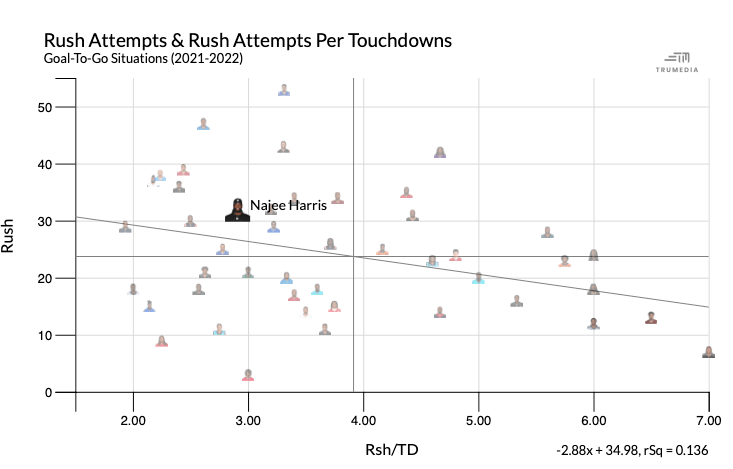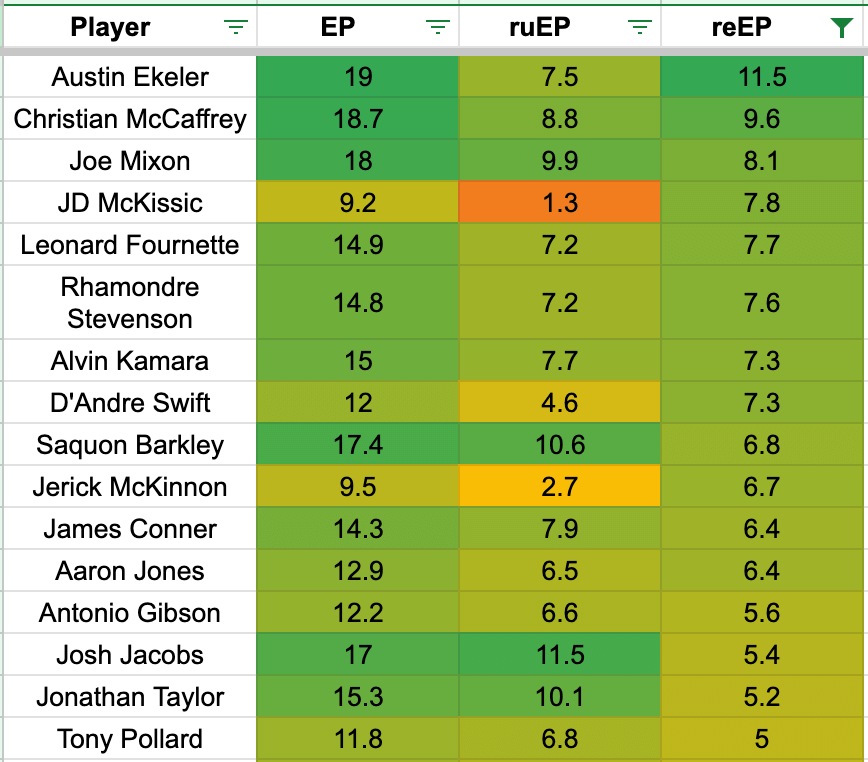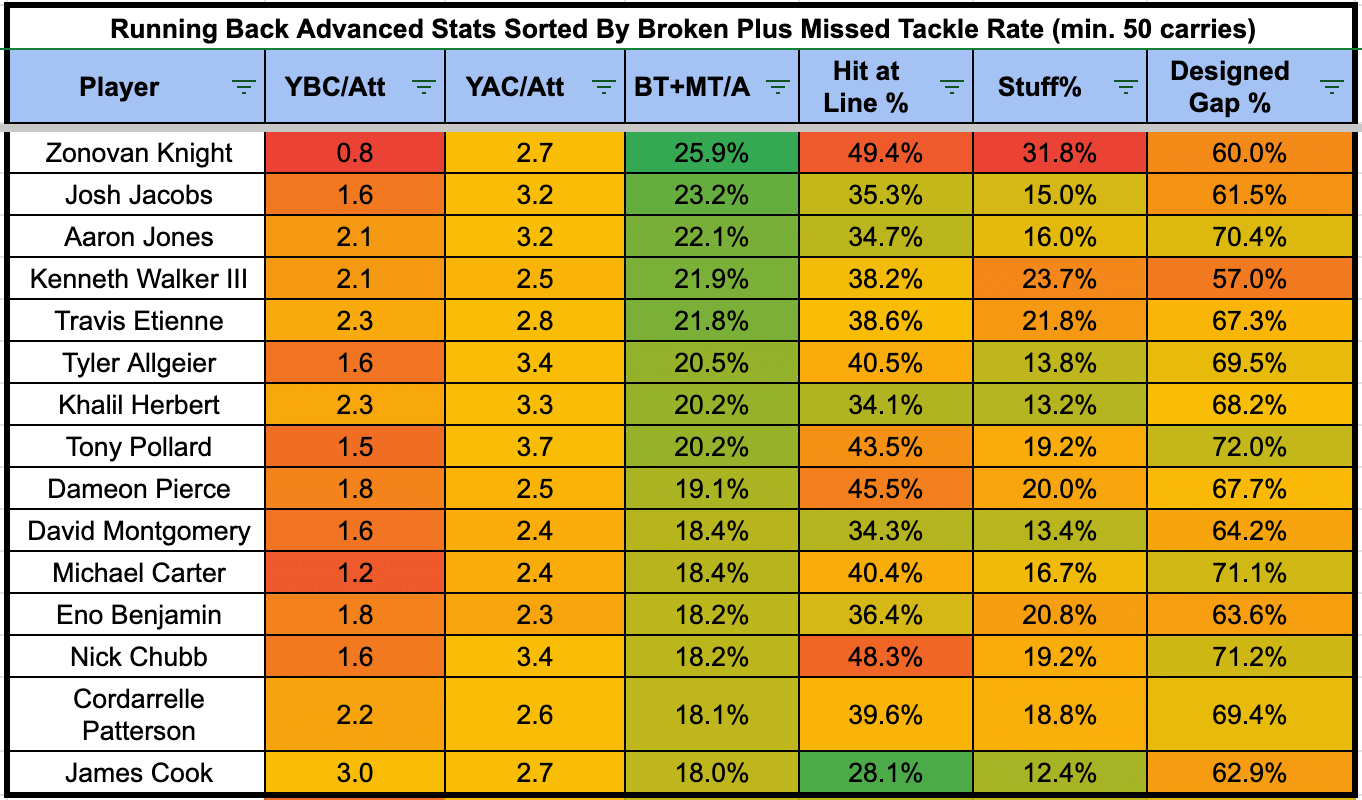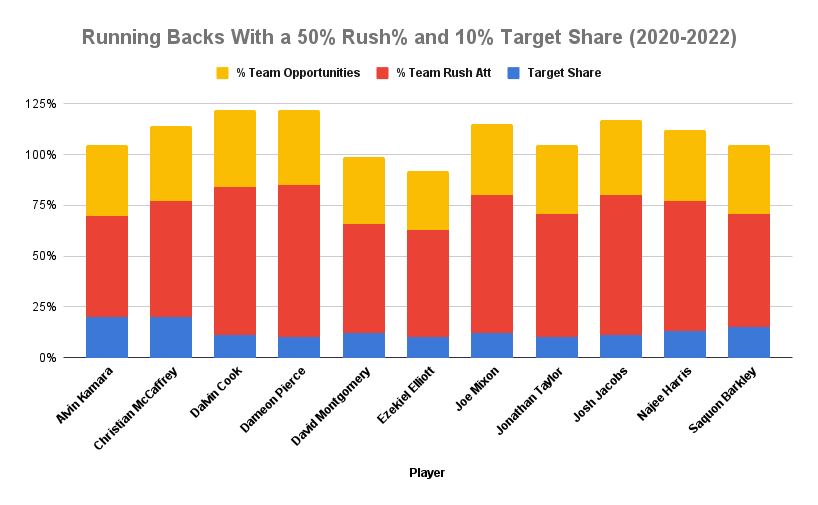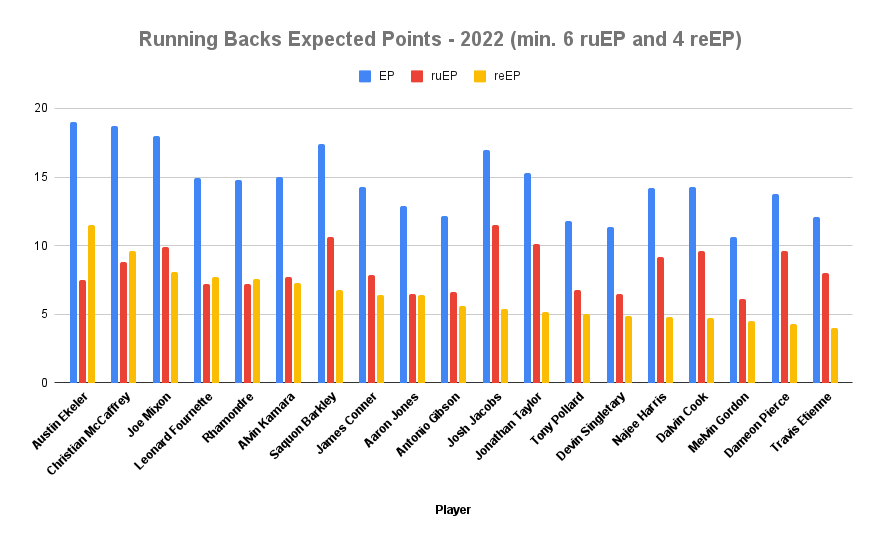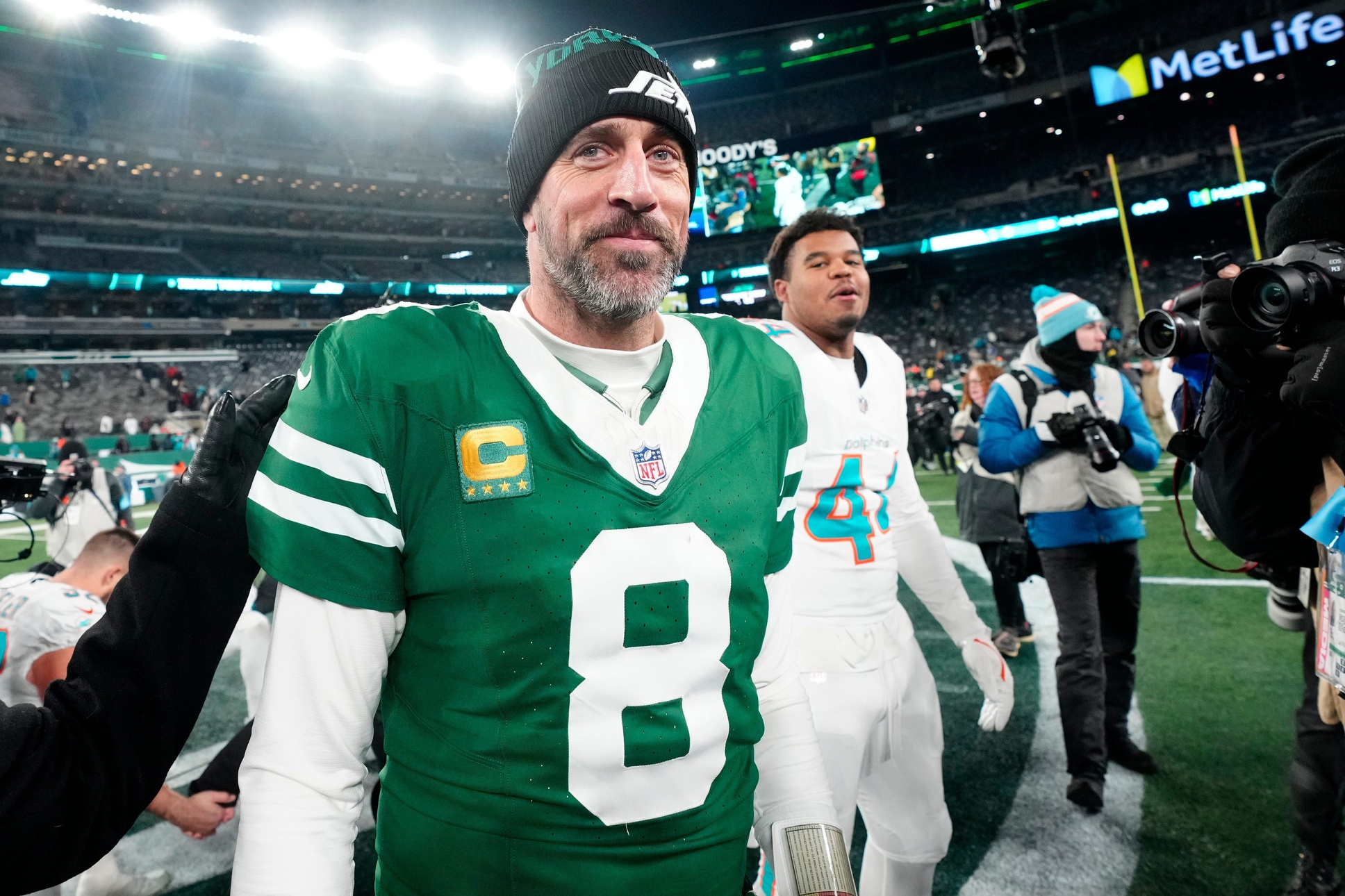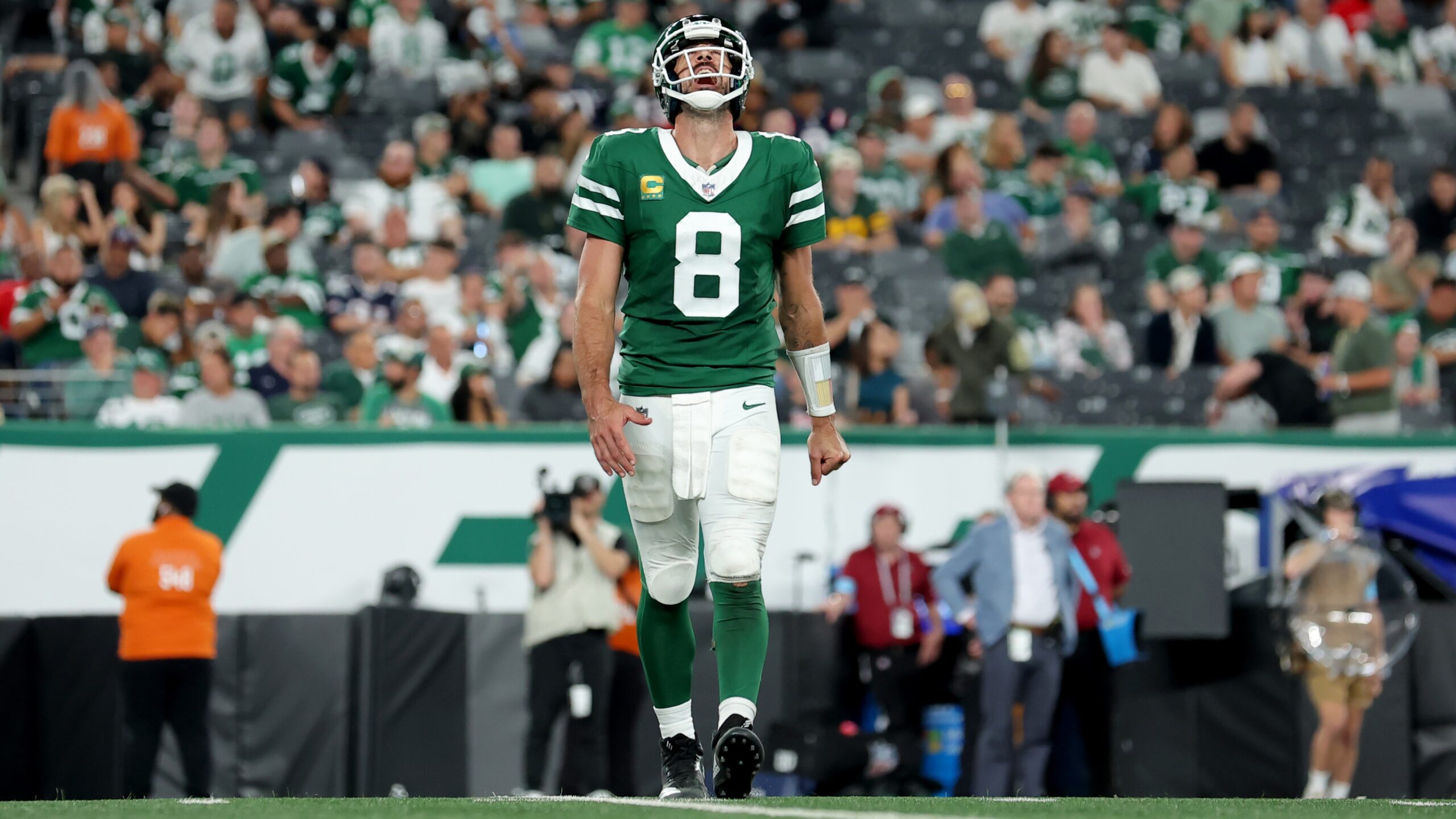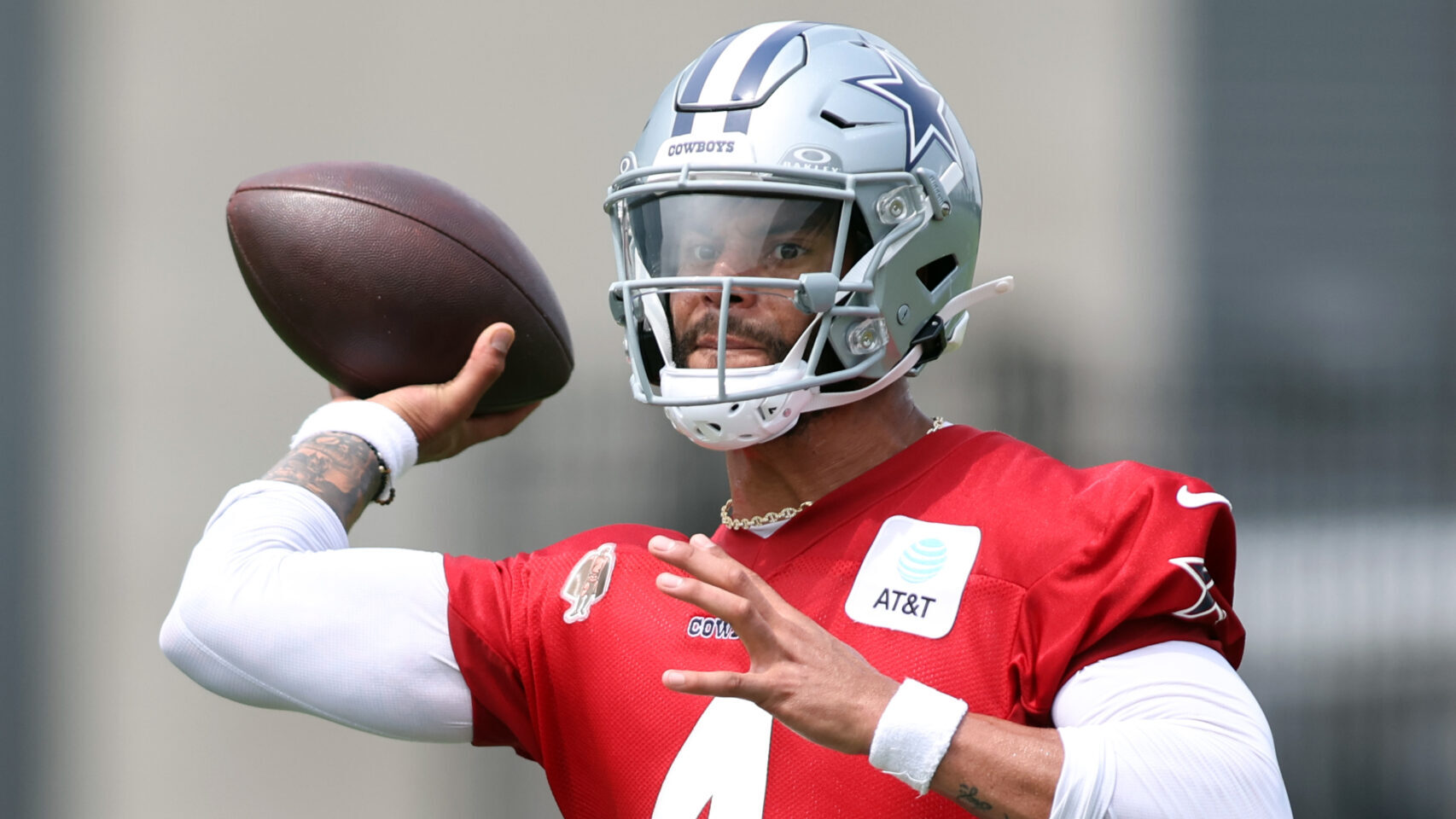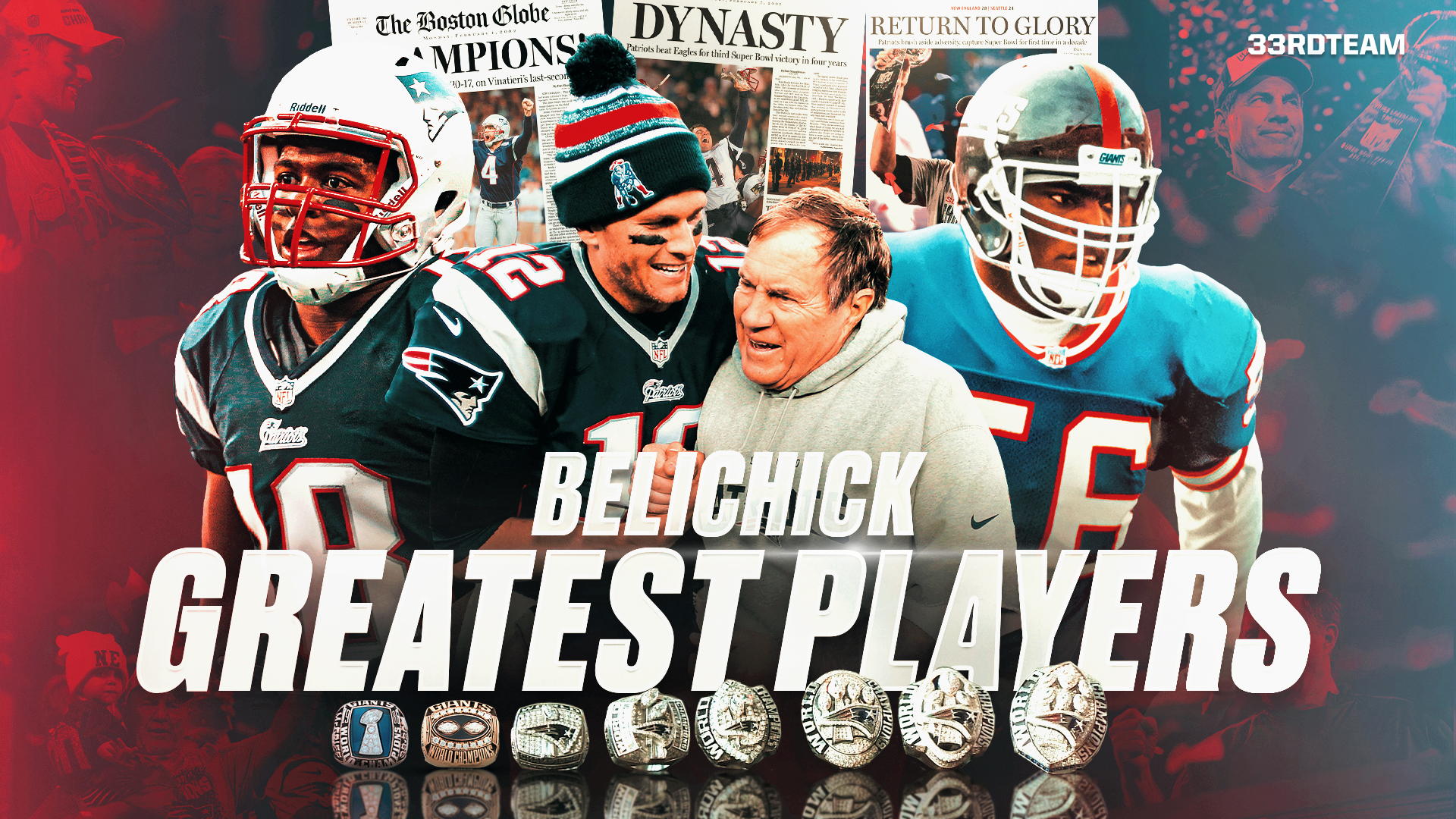Analysis
6/21/23
9 min read
2023 Fantasy Football: Undervalued Running Backs in Dynasty

Finding undervalued running backs can be a challenge, primarily due to the ever-changing nature of the running back market. The short lifespan of their NFL careers and the devaluation of the position has made it difficult to find value at running back in dynasty formats.
Each year, when a new crop of rookie running backs enters the pool, the value of the previous year's starter diminishes. However, sometimes the devaluation of running backs goes too far, leading younger or rookie backs to become overvalued instead of undervalued. Some recent examples include Kenneth Gainwell, James Cook, and AJ Dillon, to a lesser extent, though all provided value in a given week.
It's helpful to keep this in mind because a player's value is relative to the market, league context, and managers within the league. To determine which running backs are undervalued, we will compare their rank in Ian Miller's dynasty positional rankings to the prevailing market sentiments.
While some might say they're falling for a reason, so don't buy the dip, it is important to recognize that they may still hold value. With this in mind, let's examine four running backs worth targeting in dynasty formats.
Four Undervalued Running Backs in Dynasty
 Najee Harris, RB, PIT
Najee Harris, RB, PIT
Miller's RB14 vs. KTC RB13
I'm not as active on Twitter, especially during baseball season and the school year. However, one item that caught my eye involved the Jaylen Warren love over the offseason. Amongst running backs with 50 carries, Warren tied for 32nd in yards after contact per attempt (YAC/Att) with 2.6 and 48th in broken plus missed tackles per attempt (BT+MT/Att) with 13 percent. Meanwhile, Najee Harris averaged 2.5 YAC/Att (No. 41) and a higher rate of broken plus missed tackles at 17.3 percent (No. 21).
From an efficiency standpoint, Warren performed a bit better statistically than Harris. Warren averaged 0.1 in Fantasy Points Over Expected per Game (FPOE/G), which ranked No. 66, while Harris' FPOE/G was -0.7 (No. 111). The same trend occurred in yards per route run (YPRR), with 0.9 YPRR for Harris and 1.3 YPRR for Warren.
Harris' step back as a receiver accounts for much of his decreased output last season. Harris had a ten percent target share (No. 20), down from 15 percent (No. 4) as a rookie. His raw target total also reduced significantly from 94 (No. 1) to 53 (No. 18), translating into a respectable Expected Points per Game (EP/G) at 14.2 (No. 14), yet lower than 18.6 (No. 2) in 2021.
Final Takeaways
There's a scenario where the volume further declines for Harris, and Warren earns more of the pie. However, Harris could also bounce back from a value standpoint or improve his efficiency via the rushing and receiving game.
I lean more toward the latter outcome since Harris dominates goal-to-go situations, with the 12th-most carries (32) over the past two seasons, tying with Nick Chubb. Harris earned 18 carries last season, with Warren having only three (No. 66). With those high-value touches, Harris scored a touchdown on every 2.91 carries (No. 15) over the past two seasons.
It's a smaller sample, but the same usage occurred as a receiver, with ten targets in goal-to-go situations (No. 4) and 21 in the red zone (No. 6) in 2021 and 2022. For context, 29 of Warren's 33 targets (88 percent) came outside the red area.
Although Harris' Year 1 and 2 resemble Trent Richardson, David Montgomery, Doug Martin, and Sony Michel, there are additional comparisons to consider. When filtering for rushing and receiving Expected Points (EP) and Fantasy Points Over Expectation (FPOE), Melvin Gordon and Todd Gurley also emerged. In terms of total rushing and receiving EP, Harris outperformed Montgomery, Michel, Gordon, and Gurley, suggesting he may be a tier above those backs.
Since Harris came in as an older rookie at 23.5 years old, he is just entering his prime. While it's hard to imagine Harris improving his efficiency, due to his volume and red zone usage rate, he checks several boxes as one of the highly ranked yet undervalued running backs in dynasty leagues.
 D'Andre Swift, RB, PHI
D'Andre Swift, RB, PHI
Miller's RB19 vs. KTC RB22
Injuries have hampered D'Andre Swift throughout his career, and Jamaal Williams became a problem last season. Williams' takeover as red zone back led him to score a boatload of rushing touchdowns, as I chronicled in an article late last year.
Despite fewer rushing opportunities, Swift still excelled as a receiver out of the backfield. While Swift only garnered double-digit carries in three of 14 games last season, he ate up the seventh-best target share at 15 percent. Swift flashed his receiving skills with 9.2 yards after the catch per reception (No. 2) and the ninth-most receiving EP/G (7.2).
Compared with other running backs, Swift's metrics looked more like J.D. McKissic and Jerick McKinnon, who are mainly used as receiving options on third down.
In the Philadelphia Eagles' backfield, Swift will compete with oft-injured Rashaad Penny and Zero RB favorite Gainwell for touches. Penny is expected to battle Swift for the top RB spot on the Eagles' depth chart. Penny has averaged 15.4 PPR/G when garnering double-digit carries in his 11 healthy contests since Week 13 in 2021. That would rank 13th during that stretch. However, Penny ranked 46th in EP/G and first in FPOE/G, hinting at the reliance on rushing efficiency and touchdowns.
Final Takeaways
Penny could earn a role like Williams with the Detroit Lions as their early down grinder, and Swift could underperform again. On the flip side, Swift's rushing metrics hint at more upside. Last season, Swift averaged 2.9 yards before contact (No. 3), 2.6 YAC/Att (No. 32), and 14.1 percent BT+MT/Att (No. 42). Penny showed similar numbers in his five games played, evidenced by his 2.3 YBC/Att (No. 9), 3.8 YAC/Att (No. 1), and 19 percent BT+MT/Att (No. 11).
Based on their first three seasons, some of Swift's comps include Jahvid Best, Devonta Freeman, Clyde Edwards-Helaire, Saquon Barkley, Le'Veon Bell, and James Robinson. Bell and Barkley boasted a more balanced profile in rushing EP/G, though Best and Freeman look like quality comps. Unfortunately, Best dealt with concussions and didn't play in Year 3. And Freeman arguably showed more upside than Swift at that point in their career, as RB1 in Year 2, RB6 in Year 3, and RB14 in Year 4. Hopefully, Swift's health defies the narrative, and we see the balanced profile that the underlying metrics point toward. Swift might be my top candidate for undervalued running backs, mainly in the top-24 of dynasty backs.
 David Montgomery, RB, DET
David Montgomery, RB, DET
Miller's RB29 vs. KTC RB31
Montgomery probably throws a slight wrench into Jahmyr Gibbs' initial workload and upside, though the rookie's talent should flash. In the past, Montgomery has been an advanced stats darling. Last season, he boasted a 20 percent BT+MT/Att (No. 7) and 2.4 YAC/Att (No. 51). That dipped in 2021, with a 13 percent BT+MT/Att and 2.4 YAC/Att, but 2022 looks closer to 2020 (19 percent BT+MT/Att and 2.8 YAC/Att).
Though it's in college, Gibbs ranked 24th in BT+MT/Att at 25.8 percent and 29th in YAC/Att at 3.4. Gibbs boasts a balanced profile, with 54 targets (No. 5), 2.1 YPRR (No. 29), and 8.2 yards per target (No. 34). Ian Miller has Gibbs at RB3 in dynasty, higher than KTC at RB5, though it's still a top tier option.
Given Montgomery's depressed value and price, he falls into the undervalued running backs group after a career-low 10.6 EP/G (No. 31) last season. He joined ten other running backs who boasted a 50 percent rush and ten percent target share combined over the past three seasons (2020-2022). Though he missed that threshold in 2022, he met those criteria in 2021 for rush and target shares. Montgomery earned a 12 percent target share in three consecutive seasons, tying him for fifth amongst running backs. That aligned with his ninth-best receiving EP/G at 6.5 (2020-2022), which gives him an all-purpose back profile.
Final Takeaways
Ian noted Montgomery should be worth a second-round rookie pick if dynasty managers have one to spare. Backfield competition aside, Montgomery's closer comps in the first four seasons include Joe Mixon, Antonio Gibson, James Conner, Jonathan Stewart, and Melvin Gordon since 2010. Montgomery and Mixon's metrics look nearly identical, with Mixon being a year younger. If Najee Harris had a larger sample, he would be an intriguing comp, though Harris and Gordon flashed better receiving EP/G.
Given Montgomery's elusiveness, one could envision a scenario where he uses it to gain yards before contact (YBC). With the Chicago Bears, Montgomery was hit at the line over 41 percent of the time in 2020-2021 before dropping to 34 percent in 2022, one of the league's better marks.
Montgomery should have the juice to maintain the underlying metrics as a rusher and receiver to cause minor headaches for Gibbs' managers. With the Lions expected to put up points offensively, Montgomery has a reasonably high floor. There's also a scenario where Montgomery takes over the primary role if Gibbs misses time.
 Devin Singletary, RB, HOU
Devin Singletary, RB, HOU
Miller's RB 51 vs. KTC RB51
Devin Singletary shouldn't cost much in the dynasty market, and it's a cheap way to find a piece of a backfield with undervalued running backs. Singletary joined the Texans as the backup to Dameon Pierce. The former Buffalo Bills' back held his own as a rusher and receiver, with a 41 percent team rush share and a ten percent target share. In 2021 he put up similar numbers, earning a 40 percent rush share and nine percent of the team's targets. From Weeks 6 to 18, Singletary garnered ten plus carries in nine of 12 contests for an increased rush share at 44 percent.
Though it's not the most exciting profile since he shared the backfield with Zack Moss and James Cook the past two seasons, Singletary displayed a balanced profile. He averaged 6.5 rushing EP/G and 4.9 receiving EP/G last season, close to Tony Pollard and Dameon Pierce seen in the visual below.
When we filter running back expected points, Singletary shows up when we use a minimum of six rushing EP/G and four receiving EP/G. Though those thresholds seem arbitrary, we filtered for running backs with a moderate rushing and receiving profile.
Final Takeaways
Up to this point in Singletary's career, he comps to Michael Carter, Rhamondre Stevenson, Kenyan Drake, Travis Etienne, and Miles Sanders when using rushing and receiving EP/G. He probably falls somewhere between Sanders and Drake, with Sanders having the edge on the ground. Singletary's advanced metrics look similar to Pierce's last season, with 1.8 YBC for Pierce and 2.0 YBC for Singletary. Pierce averaged 2.4 YAC with Singletary at 2.6, and Pierce boasted a 16 percent BT+MT/Att, one point higher than Singletary. If Pierce misses time, there's a scenario where Singletary's rushing and receiving EP/G increase, as he would no longer be attached to an offense run by a mobile quarterback like Josh Allen.

